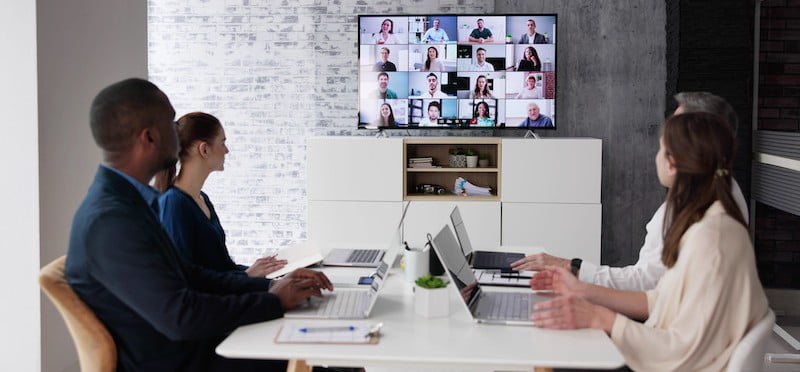The Art of Facilitating Hybrid Meetings: Tips and Best Practices

Hybrid meetings are the new norm in the era of remote work, where the traditional in-person meetings are not always possible. Hybrid meetings involve having some participants physically present in a room and others participating remotely. They offer a solution for employees to meet face-to-face while still accommodating those who are working from home.
However, facilitating hybrid meetings comes with its own unique set of challenges. In this article, we will explore some tips and best practices for meeting facilitators handling the technical aspects of hybrid meetings while creating a safe and equitable group.
Set Goals to Overcome the Technical Challenges
One of the most important aspects of a hybrid meeting is ensuring that all participants can hear and see each other. This requires a minimum standard of audio and video quality that must be met. We recommend setting goals to overcome these technical challenges and ensure that everyone can participate fully.
Choose the Right Option to Ensure Participants Can Hear and See Each Other
There are lower-tech and higher-tech options for ensuring that all participants can hear and see each other. In-room participants can hear remote participants by logging into the virtual meeting with a cell phone on speakerphone option or using an existing in-room speakerphone (ensure all other devices have sound off). Remote participants can hear in-room participants by using a dedicated speakerphone or by having every person use a mic that is muted when they are not speaking.
To see each other, we recommend designing and testing an effective technology that puts everyone on an equal footing. This can include accommodations such as using a single monitor in the meeting room, showing remote participants in the gallery view, having multiple monitors showing the gallery or using one webcam on a laptop or phone with a camera at the head of the table showing all in-room participants.
Decide If Cameras Are Required in Hybrid Meetings
There are pros and cons to having participants on camera during virtual meetings.
However, having cameras on during hybrid meetings can be beneficial for remote participants. It is important to discuss and agree on expectations regarding camera usage. Some ways to encourage the use of cameras include: sharing the facts, telling your story, asking for their help, and emphasizing the importance of body language.
Facilitator Strategies for Minimizing Hybrid Challenges
As a facilitator, it is essential to create detailed processes that ensure meeting outcomes can be met in the hybrid environment. Design variable, highly interactive discussions that leverage both in-room and remote participants and provide clarity on how the meeting will work technically for both in-room and remote participants. Conduct tech checks for remote participants to ensure that everyone is ready to participate fully.
Creating safety and equity in the group is also crucial. Use intros and icebreakers to profile remote and local participants equally. Ensure that remote participants are not overlooked or ignored, and make an effort to engage them in the discussion. Encourage all participants to share their thoughts and ideas, and create a culture of inclusion and respect.
Overall, hybrid meetings can be challenging, but with the right tools and strategies, you can facilitate a successful and productive meeting. Set goals for your hybrid meeting, choose the right options, decide on camera usage, and minimize challenges to create a safe and equitable group. Remember to design and test your technical solutions ahead of time and make everyone feel included and valued. By following these tips and best practices, you can handle the challenges of hybrid meetings like a pro.
Upcoming Workshops
Let us Know
Do you have a unique meeting challenge not covered by one of our blog posts? We’re always looking for different dilemmas to discuss in our articles!